C-RACE
€1,500.00
Description
C-RACE by Squirrel.WS – Redefining Wingsuit Performance
The C-RACE wingsuit from Squirrel.WS represents the pinnacle of wingsuit design, combining precision engineering, safety, and unmatched aerodynamic performance. Designed for experienced flyers who demand optimal glide, control, and maneuverability, the C-RACE wingsuit pushes the boundaries of what’s possible in wingsuit flight. Every stitch, seam, and panel is crafted to deliver a responsive, intuitive, and exhilarating flying experience.
Key Features of the C-RACE Wingsuit
-
Advanced Aerodynamic Design: Engineered for maximum glide ratio and stability at high speeds.
-
Premium Materials: Lightweight yet durable fabrics resist wear and tear while minimizing drag.
-
Adjustable Fit: Customizable panels allow precise body alignment for optimum performance.
-
Enhanced Control: Integrated leg and arm wing structures improve maneuverability.
-
Safety-Focused Construction: Reinforced seams and smart deployment systems reduce risk during flight.
-
Packability: Compact folding design ensures easy transport and storage.
Ideal Use for the C-RACE Wingsuit
The C-RACE wingsuit is perfect for advanced wingsuit pilots seeking high-performance flight in both proximity and open-air environments. It excels in mountainous terrains, dedicated wingsuit zones, and controlled drop zones, offering predictable behavior under diverse conditions. Riders will appreciate the balance between glide efficiency and agility, allowing both high-speed runs and precise maneuvers.
Recommended Rider Profiles:
-
Experience Level: Advanced to expert wingsuit flyers
-
Weight Range: 65–95 kg (adjustable for body type with panel adjustments)
-
Board Pairings: Compatible with all standard Squirrel.WS rigs and accessories
-
Preferred Locations: High-altitude jumps, coastal cliffs, and wingsuit training centers
Safety and Control
Safety is paramount when flying any wingsuit, and the C-RACE incorporates state-of-the-art design features to support pilots in challenging scenarios. Its reinforced wing panels allow predictable handling, while the deployment system ensures reliable canopy release. Proper pre-flight checks and body alignment adjustments enhance flight stability and reduce potential risk.
-
Pre-Flight Checklist: Confirm wing panel integrity, verify harness attachment, inspect zipper and seams.
-
Control Techniques: Use subtle arm and leg movements to adjust glide path, maintain smooth transitions between turns, and reduce drag in high-speed dives.
-
Emergency Protocols: Familiarity with parachute deployment and quick-release mechanisms is crucial.
Setup Guide and Mastering Techniques for the C-RACE Wingsuit
Flying the C-RACE wingsuit begins with proper setup. Correct assembly and adjustment are essential for optimal glide, stability, and safety. This guide ensures that pilots can maximize performance while minimizing risk.
Wingsuit Setup
-
Harness Attachment:
Ensure the wingsuit is securely fastened to your harness. Check all connection points, buckles, and straps for proper alignment. A snug fit reduces movement inside the suit and improves aerodynamic response. -
Wing Panel Adjustment:
The C-RACE features adjustable arm and leg wings. Tailor these panels to your body shape and weight, ensuring smooth airflow and balanced lift. Small tweaks can significantly enhance glide efficiency and control. -
Zipper and Seam Inspection:
Before every flight, examine all zippers and seams. Reinforced stitching improves durability, but routine checks prevent unexpected fabric stress. -
Deployment System Verification:
Confirm that the parachute deployment system functions correctly. Test the handle and ensure lines are untangled, guaranteeing safe canopy release when needed. -
Pre-Flight Dress Rehearsal:
Wear the full suit, check movement range, and practice subtle arm and leg adjustments. Familiarity with your wingsuit’s response characteristics builds confidence during actual flight.
Mastering Techniques
-
Body Positioning: Maintaining a stable, streamlined posture reduces drag and improves glide ratio. Keep arms slightly bent and legs extended to optimize wing surface tension.
-
Turns and Maneuvers: Initiate turns gently by tilting arms and legs. Sudden, exaggerated movements can destabilize flight. Mastering smooth transitions is crucial for advanced maneuvers.
-
Speed Management: The C-RACE allows high-speed glides and controlled descents. Adjust wing angles subtly to manage velocity while maintaining stability.
-
Environmental Awareness: Always consider wind direction, thermals, and terrain features. The C-RACE responds dynamically to airflow, rewarding pilots who anticipate changes.
Tips for Accelerated Learning
-
Simulated Training: Practice movement sequences on the ground to build muscle memory.
-
Incremental Progression: Start with smaller jumps and gradually increase altitude and complexity.
-
Feedback Loops: Record flights and review body positioning, wing tension, and control inputs. Adjustments after each flight improve performance over time.
-
Mentorship: Flying with experienced C-RACE pilots accelerates skill development and ensures safe adoption of advanced techniques.
Maintenance Tips and Care Instructions for the C-RACE Wingsuit
Proper maintenance and care of your C-RACE wingsuit ensures longevity, consistent performance, and safe flying conditions. Squirrel.WS designs each suit to withstand rigorous use, but regular attention prevents wear and preserves its high-performance characteristics.
Cleaning and Fabric Care
-
Gentle Washing: After each use, especially if exposed to dirt, saltwater, or sand, rinse the wingsuit with clean, lukewarm water. Avoid harsh detergents that could weaken fabric fibers.
-
Air Drying: Always air dry the wingsuit away from direct sunlight. High heat can damage fabric coatings and reduce wing elasticity.
-
Spot Cleaning: For small stains or marks, use a soft cloth with mild soap. Do not scrub aggressively to prevent abrasion.
Storage Guidelines
-
Fold Carefully: Follow the manufacturer’s recommended folding pattern to prevent stress on wing seams.
-
Temperature Control: Store in a cool, dry environment. Avoid damp areas that could promote mildew or heat exposure that might degrade fabrics.
-
Hanging Options: Use padded hangers for short-term storage to maintain wing shape, but long-term storage in a folded position is ideal to relieve stress on seams.
Regular Inspections
-
Seam Checks: Inspect all seams for fraying or loose stitching. Repair minor damage immediately to prevent further deterioration.
-
Zipper Functionality: Ensure all zippers open and close smoothly. Lubricate with silicone-based products if needed.
-
Wing Panels and Reinforcements: Examine the leading and trailing edges of wings for small tears or weak spots. Prompt attention maintains flight stability.
Repair and Upgrades
Squirrel.WS provides replacement panels, zippers, and reinforced stitching kits for the C-RACE wingsuit. Performing repairs with authorized parts ensures that performance characteristics remain consistent.
-
Authorized Service Centers: Use certified Squirrel.WS repair facilities to guarantee original quality standards.
-
Upgrades: Some wingsuits allow optional adjustments to wing surface area or harness integration, enhancing glide efficiency or pilot comfort.
Flight Preparation After Maintenance
After cleaning or repairs, always perform a pre-flight inspection:
-
Confirm that seams, panels, and zippers are intact.
-
Check that wing panels open and maintain proper tension.
-
Test parachute deployment system for smooth function.
By following these maintenance practices, pilots can extend the lifespan of their C-RACE wingsuit, maintain predictable flight characteristics, and enjoy safe, exhilarating wingsuit experiences for years to come.
Specific Scenarios, Ideal Use, and Favorite Locations for the C-RACE Wingsuit
The C-RACE wingsuit is designed to deliver exceptional performance across diverse flying environments. Understanding where and how to use it allows pilots to maximize safety, control, and thrill during every flight.
Ideal Use Scenarios
-
High-Altitude Mountain Jumps: The C-RACE excels in mountain proximity flying, offering stable glide ratios and precise maneuverability near ridges and cliffs. Its aerodynamic design allows pilots to confidently navigate complex terrain while maintaining speed and control.
-
Controlled Drop Zones: For training and progression, drop zones provide safe, predictable environments. The wingsuit responds dynamically to minor adjustments, allowing pilots to refine body positioning and wing tension in a low-risk setting.
-
Coastal Cliffs and Open Air Corridors: Flying along coastal cliffs or open air corridors maximizes glide efficiency and speed. The suit’s advanced wing structures reduce drag, enabling smooth transitions through variable wind conditions.
-
Proximity and High-Speed Flight: The C-RACE supports both technical proximity maneuvers and high-speed cross-country flights, offering a balance between agility and stability that few wingsuits can match.
Recommended Rider Profiles
-
Experience Level: Designed for advanced and expert wingsuit flyers.
-
Rider Weight Range: Optimal performance for pilots weighing 65–95 kg, with adjustable wing panels for customized fit.
-
Preferred Flight Style: Suitable for pilots who value precise control, extended glide, and responsive handling.
-
Training Requirements: Prior experience with intermediate wingsuits is recommended before progressing to high-speed or proximity flights.
Favorite Locations Among C-RACE Pilots
-
Swiss Alps, Switzerland: Steep ridges and high-altitude jumps create ideal conditions for testing glide ratio and maneuverability.
-
Table Mountain, South Africa: Coastal winds and open-air corridors allow for long, exhilarating flights.
-
Moab Desert, Utah, USA: Open desert landscapes provide a wide margin for error and practice with high-speed glides.
-
Austrian Alps, Europe: Mountain proximity and varying wind currents challenge pilots while improving skill and control.
Environmental Considerations
-
Wind Conditions: Moderate and consistent winds improve control. Avoid turbulent air and gusty conditions.
-
Thermal Activity: Thermals can enhance lift but require careful navigation to prevent destabilization.
-
Altitude Awareness: High-altitude jumps demand physical preparation and precise control techniques.
-
Safety Infrastructure: Always fly in locations with emergency services access or established drop zones when possible.Advanced wingsuit
By understanding where the C-RACE performs best and matching these conditions to pilot experience, flyers can achieve safe, exhilarating, and memorable wingsuit experiences.
Troubleshooting Common Issues
-
Wing Panel Malfunction: Check for loose straps or misaligned panels. Minor adjustments often restore performance.
-
Zipper or Seam Concerns: Inspect for fraying or blockage. Lubricate zippers with silicone-based solutions if needed and repair minor seam issues promptly.
-
Deployment System Resistance: Ensure lines are untangled and handles move freely. Test in controlled environments before high-altitude jumps.
-
Glide Instability: Reassess body position and wing panel tension. Smooth, subtle adjustments usually restore stable flight.Advanced wingsuit
Additional Tips for Safe Flight
-
Always perform a dry run on the ground to familiarize yourself with wing tension and body alignment.
-
Record flights to review and refine techniques.
-
Participate in training sessions with experienced pilots to learn advanced maneuvers safely.
-
Update your gear regularly to maintain the highest performance standards.
By following these guidelines, pilots can maximize their experience with the C-RACE wingsuit while ensuring safety and precision in every flight.High-performance wingsuit
Safety and Control with the C-RACE Wingsuit
Flying the C-RACE wingsuit combines thrill, precision, and responsibility. Safety and control are fundamental, ensuring pilots enjoy an exhilarating experience without compromising protection. Squirrel.WS designed the C-RACE to deliver predictable handling, reliable deployment, and responsive maneuverability in a variety of flight conditions.High-performance wingsuit
Core Safety Features
-
Reinforced Wing Panels: Strengthened seams and durable fabrics reduce the risk of tearing during high-speed maneuvers.
-
Reliable Deployment System: Integrated parachute handles and lines are easily accessible, minimizing the risk of delayed canopy release.
-
Adjustable Fit for Stability: Customizable wing tension aligns perfectly with pilot body type, enhancing stability during turns, dives, and glides.
-
Emergency Protocol Compatibility: The suit supports quick access to emergency parachutes, ensuring rapid response in unexpected situations.
Control Techniques
-
Subtle Body Movements: Glide path and trajectory are controlled primarily through arm and leg adjustments. Small, deliberate movements prevent sudden instability.
-
Wing Panel Management: Properly tensioned panels maintain smooth airflow, which is critical for stable turns and directional control.
-
Speed Regulation: Adjusting wing angles and body posture allows pilots to manage descent rate and maintain glide efficiency.
-
Environmental Adaptation: Pilots should continuously evaluate wind, thermal currents, and terrain features, adapting their movements for optimal control.
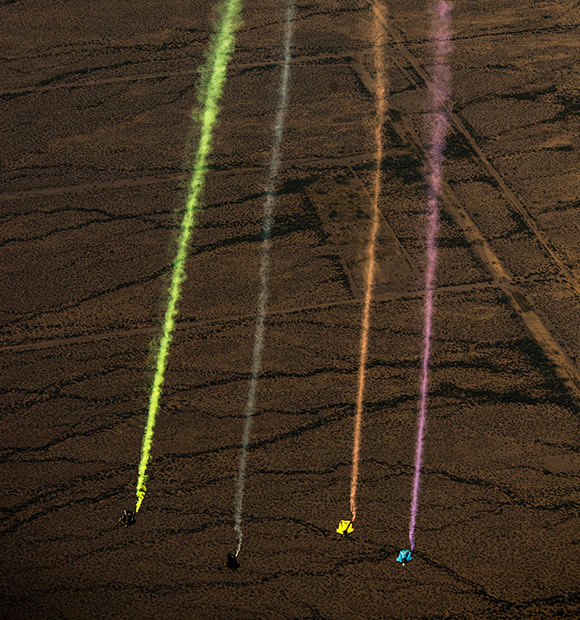
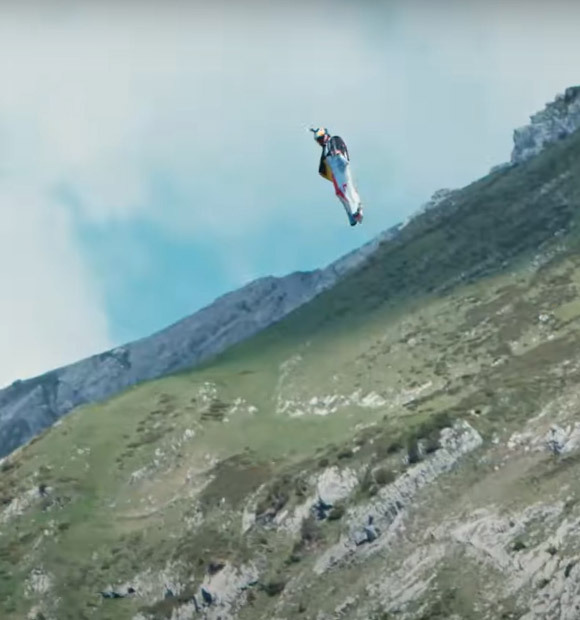
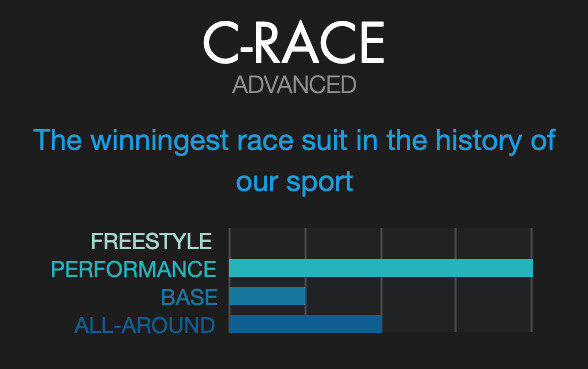
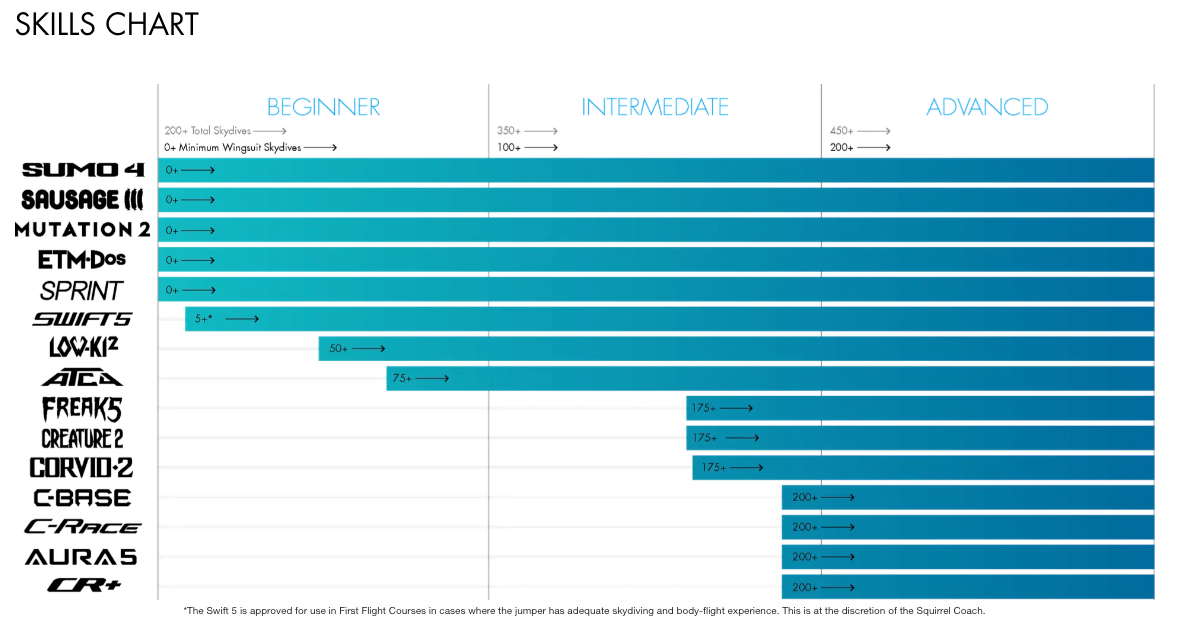
Pre-Flight Safety Checklist
-
Inspect wing seams, zippers, and panels for integrity.
-
Verify harness attachment points and buckle security.
-
Confirm parachute deployment system is untangled and functional.
-
Adjust wing panel tension for body shape and expected flight conditions.
-
Conduct a ground rehearsal of movement and deployment mechanics.
Best Practices for Safe Flying
-
Progressive Skill Building: Begin with controlled jumps before attempting high-speed or proximity flights.
-
Flight Partner System: Whenever possible, fly with experienced pilots for immediate support and guidance.
-
Environmental Awareness: Avoid turbulent winds, sudden gusts, and unstable thermals.
-
Consistent Gear Maintenance: Regular inspections and proper storage maintain suit performance and prevent accidents.
By prioritizing safety and control, pilots can fully enjoy the precision, agility, and exhilaration of the C-RACE wingsuit while minimizing risk. This combination of engineering excellence and pilot awareness ensures that every flight is both thrilling and secure.
Setup Guide and Mastering Techniques for Safe and Controlled Flight
Mastering the C-RACE wingsuit begins with proper setup, precise adjustments, and awareness of safety protocols. Attention to detail ensures predictable handling, maximum control, and exhilarating flight performance.
Wingsuit Setup for Optimal Control
-
Harness Integration: Secure the wingsuit to your harness, checking all buckles, straps, and attachment points. A tight, correctly aligned fit reduces unwanted movement inside the suit, improving stability and control.
-
Wing Panel Adjustment: Customize arm and leg wing tension based on your body weight and flight style. Proper alignment improves airflow across the wings, enhancing glide ratio and maneuverability.
-
Zipper and Seam Verification: Inspect all zippers and seams before flight. Reinforced stitching provides durable protection, but routine checks prevent unexpected failures.
-
Parachute Deployment System Test: Ensure handles move freely and lines are untangled. Confirming reliable emergency function is crucial for safe flight.
-
Pre-Flight Ground Rehearsal: Practice subtle arm and leg movements while wearing the suit. Understanding how the wingsuit responds on the ground builds confidence for real-flight scenarios.Squirrel wingsuit
Mastering Flight Techniques
-
Body Positioning: Maintain a streamlined posture, slightly bent arms and extended legs. This reduces drag and ensures smooth airflow across wings, enhancing stability.Squirrel wingsuit
-
Controlled Turns: Initiate turns gently, using coordinated arm and leg movements. Abrupt or exaggerated motions can destabilize flight. Smooth transitions are key for precise directional control.
-
Speed Management: Adjust wing tension and posture to regulate glide velocity. The C-RACE allows high-speed glides while preserving maneuverability and stability.Squirrel wingsuit
-
Environmental Awareness: Continuous assessment of wind patterns, thermals, and terrain ensures pilots anticipate changes and maintain safe, controlled flight.
Advanced Techniques for Skilled Pilots
-
Proximity Navigation: When flying near terrain or ridges, make micro-adjustments to wing tension and body posture to stay stable.
-
Thermal Utilization: Subtle body shifts can exploit rising thermals for extended flight time.
-
Smooth Energy Transitions: Manage potential energy during altitude changes to maintain consistent glide ratios and wing responsiveness.
-
Emergency Preparedness: Always maintain awareness of parachute deployment options and practice emergency procedures regularly.
Tips for Accelerated Mastery
-
Incremental Progression: Start with moderate jumps and gradually increase altitude and complexity.
-
Mentorship: Flying alongside experienced C-RACE pilots improves skill acquisition and reinforces safety habits.
-
Flight Review: Recording flights helps identify areas for improvement in posture, wing tension, and maneuver execution.
-
Consistent Practice: Regular flight sessions combined with ground simulations improve muscle memory and control precision.
By combining meticulous setup, mastery of flight mechanics, and adherence to safety protocols, pilots can extract peak performance and exhilarating control from the C-RACE wingsuit. Each flight becomes a balance of thrill, precision, and safety.
FAQ – C-RACE Wingsuit
Flying the C-RACE wingsuit raises common questions about performance, safety, and technical operation. This FAQ provides clear answers to help pilots maximize flight experience and maintain control.
Frequently Asked Questions
Q1: Who should fly the C-RACE wingsuit?
The C-RACE is designed for advanced and expert wingsuit pilots. Beginners should gain experience with intermediate suits before transitioning. Mastery of body positioning, wing control, and emergency procedures is essential.
Q2: How do I adjust the wing panels correctly?
Loosen tension straps on arms and legs, align the panels with your body, and incrementally tighten. Always test adjustments in low-risk flights before high-altitude or high-speed jumps. Proper tension ensures stability, maneuverability, and safe glide.
Q3: What safety measures are built into the C-RACE?
-
Reinforced wing panels for durability
-
Reliable parachute deployment system
-
Adjustable wing tension for controlled handling
-
Compatibility with emergency quick-release systems
Q4: How should I prepare for flight?
-
Conduct a pre-flight inspection of harnesses, zippers, and wing panels
-
Test parachute deployment in a controlled environment
-
Rehearse body positioning and control movements on the ground
-
Assess environmental conditions, including wind, thermals, and terrain
Q5: What maintenance is required?
-
Rinse suit with clean water after exposure to dirt, sand, or salt
-
Air dry away from direct sunlight
-
Inspect seams, zippers, and wing panels for wear
-
Repair minor damage promptly using authorized Squirrel.WS parts
Q6: Can the C-RACE be used for proximity flying?
Yes. Its aerodynamic design and precise control make it suitable for proximity flights near mountains or ridges. Pilots should practice gradually, accounting for terrain, wind, and speed.
Q7: How do I handle unstable glide or control issues?
-
Check wing tension and alignment
-
Reassess body positioning
-
Make small, deliberate adjustments rather than abrupt movements
-
Record flights to identify areas for improvement
Q8: Are there recommended locations for flying the C-RACE?
-
High-altitude mountain jumps for technical proximity flying
-
Coastal cliffs or open-air corridors for extended glide
-
Established drop zones for controlled practice
Always consider safety infrastructure and environmental conditions.
Quick Tips for Safe and Controlled Flight
-
Perform incremental skill progression before attempting high-speed or technical maneuvers
-
Fly with experienced pilots to reinforce safety and gain feedback
-
Maintain consistent gear inspections to prevent equipment-related incidents
-
Continuously monitor wind, thermals, and terrain to adjust flight accordingly
By addressing these common concerns, pilots can fully enjoy the precision, speed, and exhilaration of the C-RACE wingsuit while maintaining safety and control.Squirrel wingsuit
Additional information
| Size | XS, S, M, L, XL, XXL |
|---|


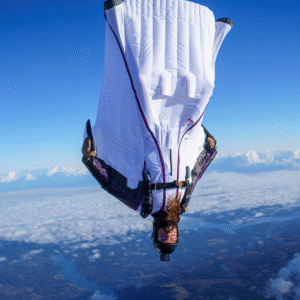

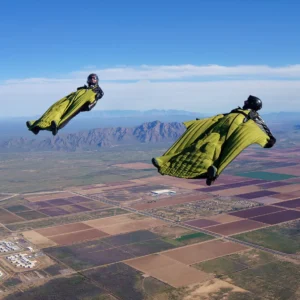
Reviews
There are no reviews yet.